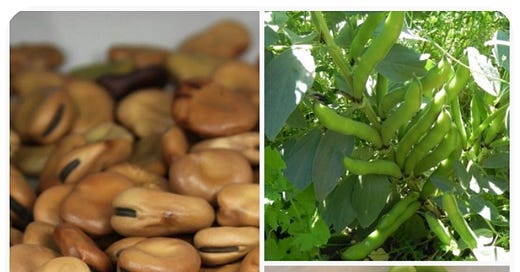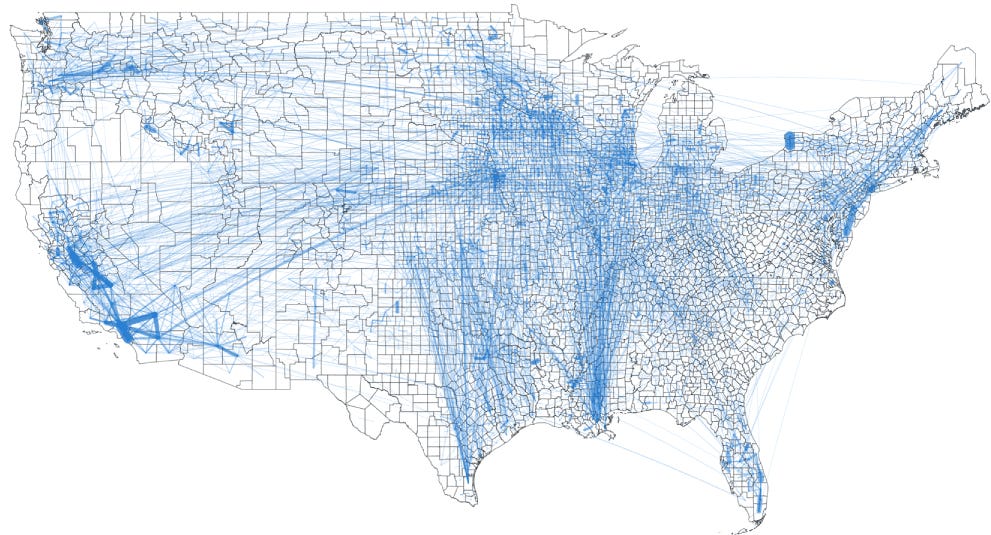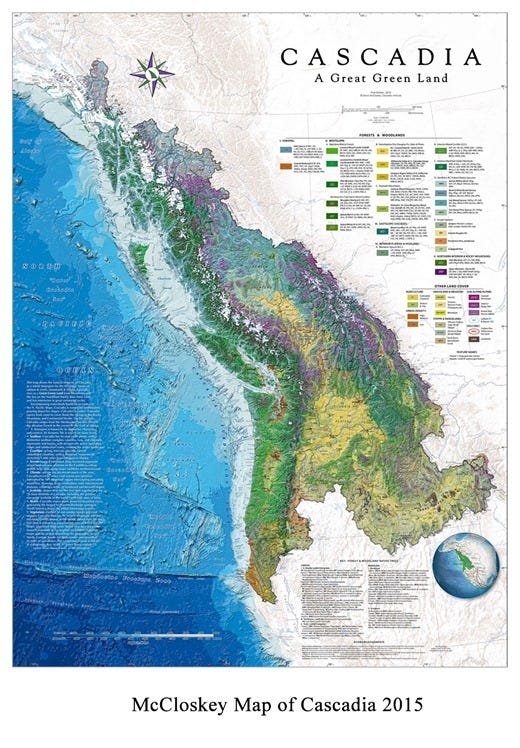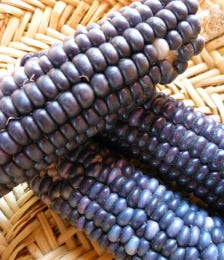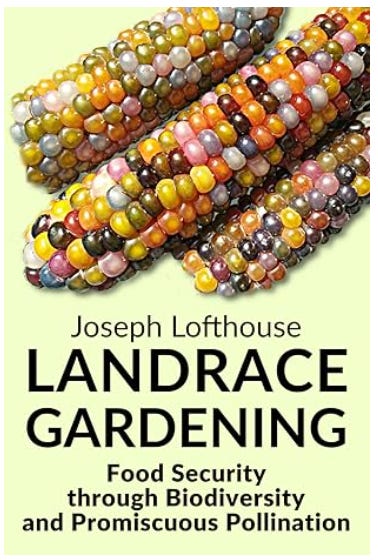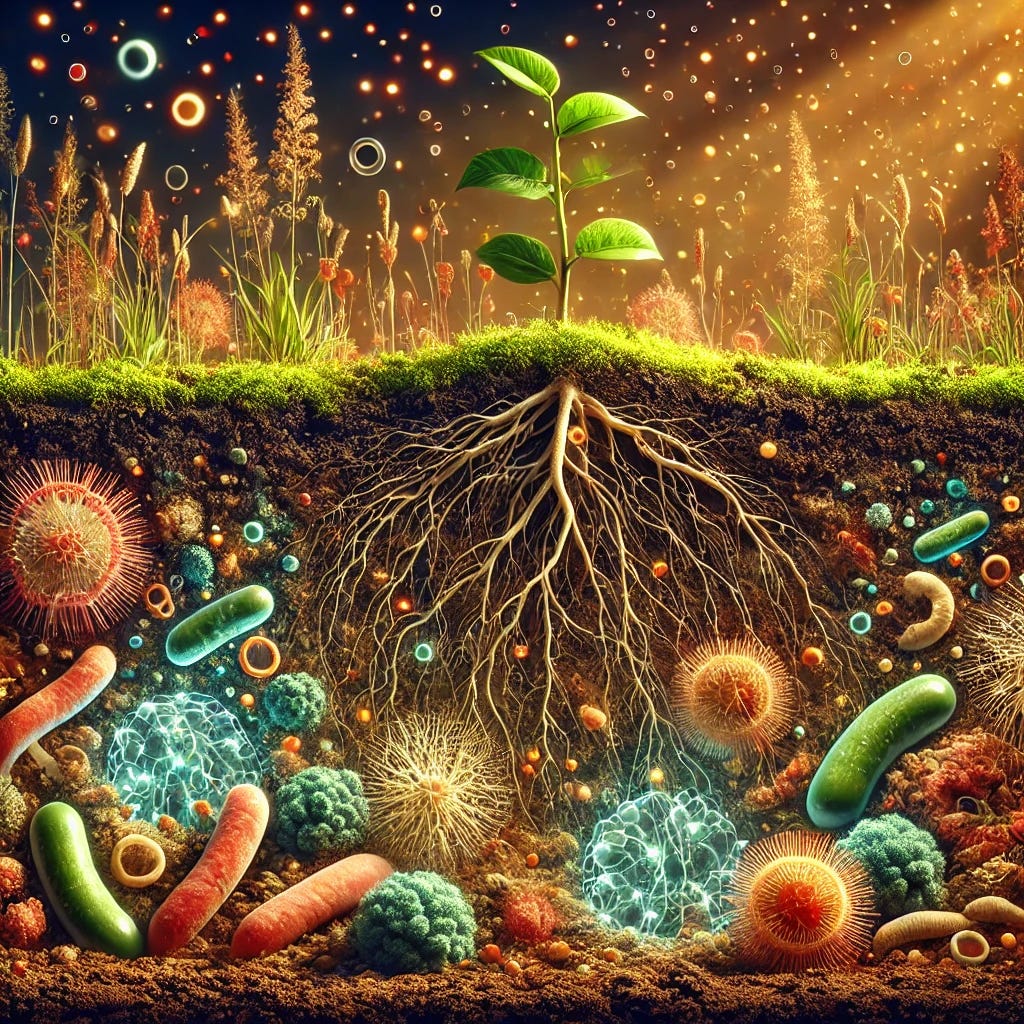1. Vision and Purpose
Why Seeds and Spores Matter
This article is based on the work of the Cascadia Seed Guild based in the Cascadia Bioregion of the USA and via the Regenerate Cascadia initiative. Here we detail how we evolved the Cascadia Seed Guild to hopefully help you to do the same.
Seeds and spores are the bedrock of life on Earth. Almost all terrestrial ecosystems depend on these tiny, yet profoundly powerful life forms. From the towering forests that regulate our planet's climate to the crops that sustain human civilizations, seeds and spores are the starting point for growth, diversity, and resilience. Without them, the intricate web of life that sustains soil, plants, animals, and humans would unravel. Over the years a good deal of our seed systems were captured by a few chemical companies via patent systems; here Bill Mollison speaks to this.
Seeds: The reproductive units of flowering plants, grasses, vegetables, and trees that provide the essential resources for food, shelter, and ecological services.
Spores: The primary reproductive mechanism of fungi, mosses, and ferns, which play critical roles in soil formation, nutrient cycling, and ecosystem health.
These fundamental life forms connect us to the land, ecosystems, and one another. Stewarding seeds and spores is not merely a technical task but an act of ecological and cultural preservation.
The Vision of Bioregional Seed Movements
The mission of Bioregional Seed Movements is to reclaim, protect, and celebrate the foundational importance of seeds and spores as sources of life. These movements aim to:
Foster Community Resilience
By building localized seed systems, communities become less dependent on external, fragile supply chains and more capable of thriving in the face of environmental and economic challenges. Locally adapted seeds ensure that crops and ecosystems can withstand climate variability, pests, and disease.Promote Biodiversity
Biodiversity starts with seeds. The genetic diversity preserved in locally adapted seeds supports robust ecosystems that can adapt to changing conditions. Diverse crops and plants not only feed people but also provide habitats for pollinators, soil microorganisms, and wildlife.Ensure Food Sovereignty
Seeds are a symbol of sovereignty and self-determination. By protecting access to seeds and spores as a community resource, people can make choices about what they grow and eat, breaking free from dependence on corporate-controlled seed systems.Strengthen Bioregional Identity
Seeds reflect the ecological, cultural, and historical stories of their regions. Growing and preserving bioregionally adapted seeds reconnects communities to their landscapes and fosters a sense of place and belonging.Heal the Soil, Sustain the Earth
The interdependence of seeds, soil, and spores underpins ecological health. Seed systems rooted in regenerative practices enhance soil fertility, water retention, and carbon sequestration, contributing to broader efforts to heal the planet.
Purpose
Bioregional Seed Movements strive to establish a living legacy of seeds and spores that will sustain future generations. By embedding these systems in permaculture ethics, technological innovation, and community collaboration, they aim to:
Serve as a bridge between traditional knowledge and modern science.
Provide a model for sustainable living that can be replicated globally.
Offer a practical pathway to align human activity with the natural rhythms of the Earth.
In nurturing the smallest forms of life—seeds and spores—we safeguard the future of all life.
The Role of Seeds in Bioregional Identity
Seeds are more than the building blocks of plant life—they are living archives of a region’s ecosystems, cultures, and histories. They carry the genetic information that allows plants to thrive in specific conditions, but they also encapsulate stories of human connection to the land. By cultivating, preserving, and sharing seeds, we strengthen our ties to place and create a shared identity rooted in resilience and abundance.
Seeds as Reflections of Local Ecosystems
Adaptation to Local Conditions
Each seed is shaped by the unique climate, soil, and ecological interactions of its environment. Seeds grown and saved in a bioregion become genetically attuned to local conditions, developing resilience to specific pests, diseases, and climate fluctuations.Keystone of Local Food Systems
The crops grown from these seeds often form the basis of local diets, sustaining communities through their nutritional and cultural significance. For example:Coastal regions may rely on drought-tolerant grains or salt-tolerant crops.
Mountainous areas often cultivate high-altitude-adapted root vegetables.
Supporting Biodiversity
Locally adapted seeds encourage a wide variety of plant species, which in turn support pollinators, wildlife, and soil microbiomes. This biodiversity strengthens the entire ecosystem, creating a foundation for long-term ecological health.
Seeds as Carriers of Cultural Heritage
Heirloom Varieties and Traditional Crops
Heirloom seeds carry the cultural history of a community. They represent the crops that have been selected, grown, and passed down through generations, often reflecting the tastes, agricultural practices, and innovations of a specific culture.Sacred and Ceremonial Significance
Many Indigenous and traditional communities consider seeds sacred. They feature prominently in rituals, ceremonies, and oral traditions. Stewarding these seeds is not only about survival but about preserving spiritual and cultural continuity.Culinary Traditions
Local seeds shape regional cuisines, providing the ingredients for dishes that connect people to their ancestors and homelands. A unique pepper variety or an ancient grain can tell the story of migration, adaptation, and resilience.
Strengthening Connections to Place
A Living Memory of the Land
Seeds serve as a record of the land’s ecological and cultural changes. When we save seeds, we preserve the history of how people interacted with the land over time—what they grew, ate, and traded, and how they adapted to shifting environmental conditions.Rebuilding Local Resilience
In an era of globalized food systems, cultivating bioregionally adapted seeds allows communities to regain autonomy and resilience. Seeds become a tool for reclaiming local sovereignty over food production, ensuring that communities can thrive independently of industrial systems.Fostering Stewardship
Caring for seeds fosters a deeper relationship with the land. It involves observing seasonal changes, understanding the needs of plants and soil, and cultivating a reciprocal relationship with nature. This practice reconnects people with their bioregion, encouraging sustainable and regenerative practices.
The Future of Seeds in Bioregional Identity
By recognizing seeds as vital to bioregional identity, we also recognize the urgency of protecting them. As climate change and industrial agriculture threaten seed diversity, the work of saving and stewarding seeds becomes a form of resistance—a way to protect the ecological and cultural heritage of a place.
Through Bioregional Seed Movements, we can ensure that seeds not only survive but continue to thrive as living symbols of the deep connection between people, place, and the web of life.
Practical Components of Seed Collection and Conservation
Here we are going into more detailed explanations of some of the more technical aspects of Bioregional Seed Operations.
a. Seed Collection and Conservation
Seeds are both a biological resource and a cultural treasure, and their conservation requires thoughtful, intentional practices. By focusing on seed sovereignty, landrace breeding, and innovative ecological techniques, Bioregional Seed Movements can ensure that seeds remain a resilient and accessible resource for generations.
1. Seed Sovereignty
Definition and Importance
Seed sovereignty is the right of communities to save, share, and grow seeds without external interference or control. It emphasizes the idea that seeds are a public good, belonging to the communities and ecosystems that sustain them, rather than to corporations or individuals.
Strategies to Achieve Seed Sovereignty
Community Seed Banks: Establish community-managed seed banks where members can deposit, access, and exchange seeds freely. This ensures that seeds remain in the hands of local growers and not locked in corporate control.
Open-Source Seed Licensing: Promote open-source agreements that legally protect seeds from patenting, ensuring they remain available for community use and adaptation.
Advocacy and Policy Engagement: Work to influence local, national, and international policies to protect the rights of farmers and communities to save and exchange seeds.
Challenges and Solutions
Threats from Corporate Patents: Advocate against laws and practices that allow patenting of seeds.
Loss of Traditional Knowledge: Document and share seed-saving practices through workshops, online platforms, and mentorship programs to preserve cultural and ecological knowledge.
2. Landrace Breeding
What Is Landrace Breeding?
Landrace breeding involves cultivating plant varieties that are specifically adapted to the environmental conditions of a region. These plants are genetically diverse and resilient, making them better suited to withstand pests, diseases, and climate variability.
Benefits of Landrace Breeding
Resilience: Plants grown through landrace breeding are often hardier and better equipped to handle local challenges such as drought, flooding, or frost.
Genetic Diversity: By encouraging natural genetic variation, landrace breeding supports robust ecosystems and provides a buffer against crop failure.
Cultural and Culinary Value: Landrace varieties often have unique flavors and characteristics tied to their bioregion, contributing to local food traditions.
How to Implement Landrace Breeding
Start with Diverse Seeds: Use a mix of varieties to maximize genetic potential.
Grow Under Local Conditions: Allow plants to adapt naturally to the soil, climate, and pests of the region.
Select and Save the Best Seeds: Each growing season, save seeds from the plants that perform best. Over time, this creates a unique, bioregionally adapted variety.
Collaborate with Farmers and Gardeners: Share seeds, data, and techniques within the community to accelerate adaptation and innovation.
3. Quorum Sensing Techniques
What Is Quorum Sensing?
Quorum sensing is a biological process where microorganisms communicate and coordinate their activity based on population density. In agriculture, quorum sensing can be harnessed to improve plant health, soil fertility, and seed vitality by fostering beneficial microbial communities.
Applications in Seed and Soil Health
Enhanced Germination: Microbial treatments can improve seed germination rates by creating a supportive microbial environment that reduces stress and promotes vigor.
Soil Microbial Health: By fostering a diverse and active microbial population in the soil, quorum sensing techniques can enhance nutrient availability, improve disease resistance, and support plant growth.
Symbiotic Relationships: Leveraging the natural relationships between plants and microbes (e.g., mycorrhizal fungi or nitrogen-fixing bacteria) can significantly boost productivity and resilience.
How to Apply Quorum Sensing in Seed Movements
Seed Inoculation: Treat seeds with microbial solutions that promote beneficial interactions. For example, inoculating legumes with rhizobia bacteria enhances nitrogen fixation.
Soil Amendments: Use compost teas, biochar, and microbial additives to enrich soil microbiomes.
Research and Experimentation: Collaborate with scientists and agricultural experts to study the effects of quorum sensing on seed germination, growth, and resilience.
Education and Training: Provide workshops and materials to teach farmers and gardeners how to apply these techniques effectively.
Challenges and Opportunities
Access to Resources: Ensure that microbial treatments and tools are affordable and accessible to small-scale farmers.
Education Gap: Increase awareness and understanding of microbial techniques through community education programs.
Integration with Traditional Practices: Blend quorum sensing approaches with traditional seed-saving and soil management practices for holistic solutions.
Conclusion
The pillars of seed sovereignty, landrace breeding, and quorum sensing techniques form a powerful foundation for Bioregional Seed Movements. By prioritizing community control, biodiversity, and ecological innovation, these approaches create seed systems that are resilient, adaptable, and deeply rooted in local ecosystems and cultures.

